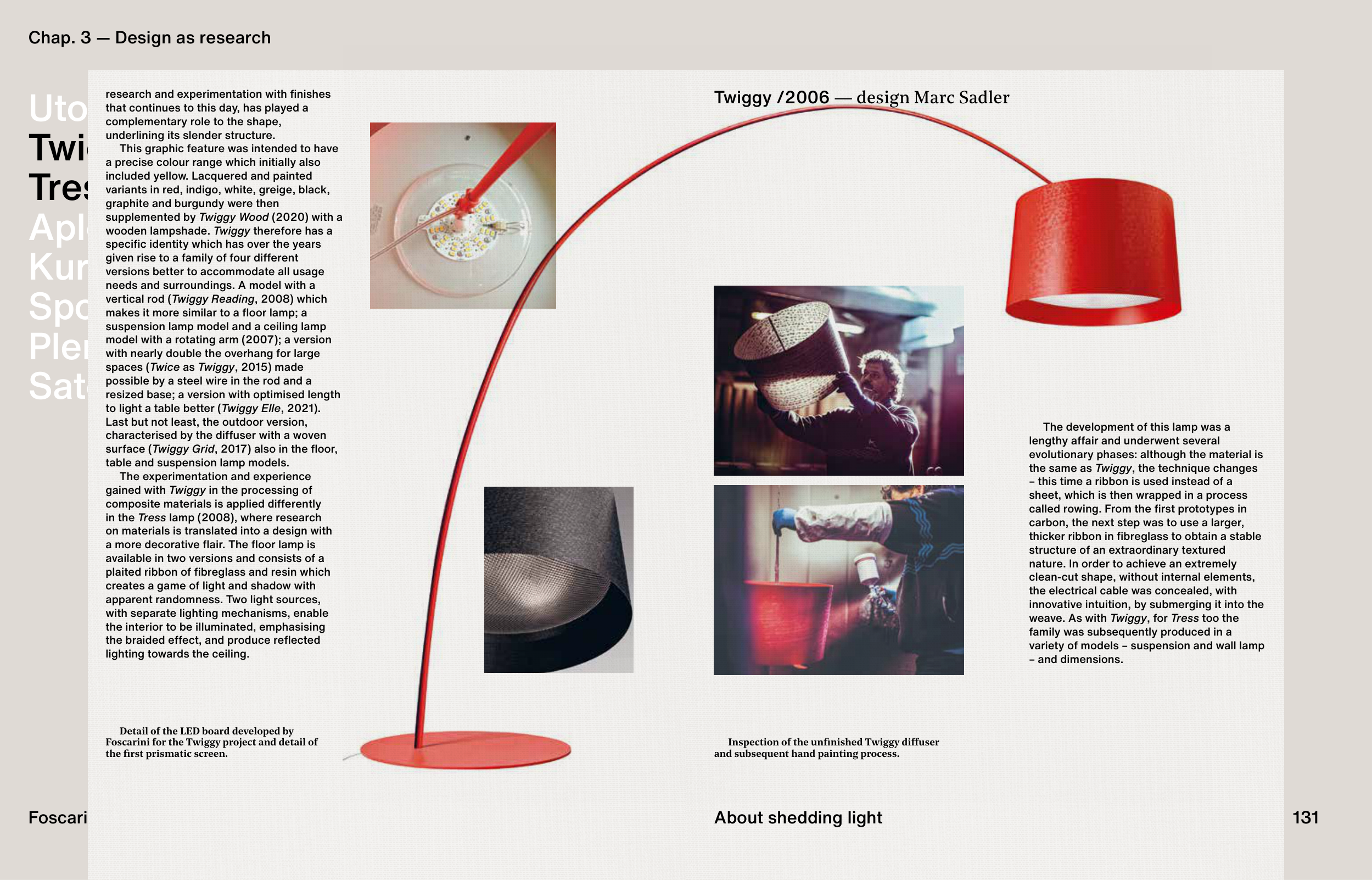131
Uto
Twiggy
Tress
Aplomb
Kurage
Spokes
Plena
Satellight
Foscarini
Chap. 3 — Design as research
research and experimentation with fi nishes
that continues to this day, has played a
complementary role to the shape,
underlining its slender structure.
This graphic feature was intended to have
a precise colour range which initially also
included yellow. Lacquered and painted
variants in red, indigo, white, greige, black,
graphite and burgundy were then
supplemented by Twiggy Wood (2020) with a
wooden lampshade. Twiggy therefore has a
specifi c identity which has over the years
given rise to a family of four different
versions better to accommodate all usage
needs and surroundings. A model with a
vertical rod (Twiggy Reading, 2008) which
makes it more similar to a fl oor lamp; a
suspension lamp model and a ceiling lamp
model with a rotating arm (2007); a version
with nearly double the overhang for large
spaces (Twice as Twiggy, 2015) made
possible by a steel wire in the rod and a
resized base; a version with optimised length
to light a table better (Twiggy Elle, 2021).
Last but not least, the outdoor version,
characterised by the diffuser with a woven
surface (Twiggy Grid, 2017) also in the fl oor,
table and suspension lamp models.
The experimentation and experience
gained with Twiggy in the processing of
composite materials is applied differently
in the Tress lamp (2008), where research
on materials is translated into a design with
a more decorative fl air. The fl oor lamp is
available in two versions and consists of a
plaited ribbon of fi breglass and resin which
creates a game of light and shadow with
apparent randomness. Two light sources,
with separate lighting mechanisms, enable
the interior to be illuminated, emphasising
the braided effect, and produce refl ected
lighting towards the ceiling.
Detail of the LED board developed by
Foscarini for the Twiggy project and detail of
the fi rst prismatic screen.
Twiggy /2006 — design Marc Sadler
About shedding light
The development of this lamp was a
lengthy affair and underwent several
evolutionary phases: although the material is
the same as Twiggy, the technique changes
– this time a ribbon is used instead of a
sheet, which is then wrapped in a process
called rowing. From the fi rst prototypes in
carbon, the next step was to use a larger,
thicker ribbon in fi breglass to obtain a stable
structure of an extraordinary textured
nature. In order to achieve an extremely
clean-cut shape, without internal elements,
the electrical cable was concealed, with
innovative intuition, by submerging it into the
weave. As with Twiggy, for Tress too the
family was subsequently produced in a
variety of models – suspension and wall lamp
– and dimensions.
131
Inspection of the unfi nished Twiggy diffuser
and subsequent hand painting process.


